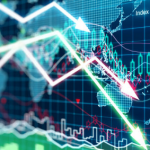3 Ways To Survive The Next Crash
 There are plenty of misconceptions about investment systems. It’s an esoteric field, so I’m not surprised. Most on the outside tend to think of systems as mysterious, robot-driven, “black box” investment things. But the reality isn’t that mysterious or complicated.
There are plenty of misconceptions about investment systems. It’s an esoteric field, so I’m not surprised. Most on the outside tend to think of systems as mysterious, robot-driven, “black box” investment things. But the reality isn’t that mysterious or complicated.
A systematic investment strategy starts with an idea… which turns into a hypothesis… which is then proven or disproven.
The idea can be as simple as: “I think cheap stocks beat expensive stocks in the long run.” That value investing hypothesis has been studied and tested for decades now and has proved to be worthwhile.
Of course, a keen observation about the markets can prove invaluable, but it’s no systematic strategy. Take Kyle Bass, founder of Hayman Capital in Dallas. In 2006, he created a hedge fund to exploit a single hypothesis: that the U.S. subprime mortgage market would implode.
That market did implode. And Mr. Bass made a ton of money. He’ll need to come up with a new great idea for his next fund, though.
Unless you’re Kyle Bass in the making, or he’s your mentor, you’d do better to adopt a systematic investment strategy that exploits events that occur over and over with a good deal of regularity.
Today I’ll help you with that…
Cliff Asness of AQR Capital Management (a quantitative/systematic hedge fund) explained why a strategic investment system is important. During an interview with Steve Forbes, he said (paraphrased):
With systems, you’re leveraging an idea… that cheap always beats expensive, or that low-volatility always beats high-volatility. And you’re applying that idea across hundreds of symbols… so that, in the long run, you’re exploiting the mathematical edge that’s contained in your idea.
THAT’S the essence of a system. That’s what I aim to do with Cycle 9 Alert and Max Profit Alert.
The idea behind Cycle 9 Alert is simple: everything cycles through periods of underperformance and outperformance.
That idea applies to sectors within the stock market… to individual stocks within sectors… and also to asset classes outside of equity markets, like commodities, currencies and bonds.
And that’s important to pay attention to. I don’t just focus on stocks. If I did, it would be a surefire way to miss out on great opportunities elsewhere.
The stock market’s not the be-all and end-all. Sure, it’s had a great run since early 2009. But the bull market won’t last forever. In fact, now more than ever, it looks to be under serious threat.
At best, the risk-adjusted returns the U.S. equity markets could produce over the next five years are likely to pale in comparison to the last five years. At worst, any number of global risks could trigger a repeat of the 2008 stock market crash. It’s too early to tell… but the recent Brexit surprise could do it.
Either way, looking for Cycle 9-style opportunities outside the stock market is a must. It should be a requirement in any investment strategy you decide to go with.
The good news is: a careful study of historical stock market crashes reveals which asset classes are safe haven plays in times of crisis.
Here’s a sampling of three, non-equity investments that did quite well to cushion the blow of a plummeting stock market in 2008. These are the three ways you can survive the next crash.
First, a currency…
1) Japanese Yen (CurrencyShares Japanese Yen ETF: FXY)
Between September and December 2008, FXY gained 16%, while the S&P 500 (SPY) lost 29%.
Next, a bond fund…
2) 2-Year Treasury Bonds (via ETF: SHY)
My Cycle 9 system generated four buy signals on the Barclays Low Duration Treasury ETF (NYSE: SHY) between July 2007 and January 2009. Each one was profitable… because, like with the yen, the dollar is a safe haven currency, so investors tend to clamor for U.S. Treasury bonds when it seems as if the world is ending.
Finally, a basket of commodities…
3) PowerShares DB Commodity Index (NYSE: DBC)
Commodities sold off alongside equities during the second half of 2008. But that doesn’t mean there weren’t any gains to be had buying commodities in the first half of the year. The two trades triggered by my Cycle 9 system between October 2007 and March 2008 netted a combined 22% gain.
The most important point to take away from today is this…
Whenever stocks crash, we’ll be ready… and you can be too!
As I mentioned, it’s too early to know, for sure, whether last week’s Brexit surprise will end up being a relatively minor “blip” on the radar… or the proverbial “straw” that breaks the camel’s back. Only time will tell…
Interestingly, though, a number of safe haven assets – just like the ones above – have shot higher over the last three days.
On the currency front, the Japanese yen (FXY) is up 2.5%… and the U.S. dollar (UUP) is up 1.7%.
Gold (GLD) surged 4.3% higher.
And, of course, high-quality U.S. Treasury bonds (TLT) are up 1.7%.
These moves are to be expected, given just how off-balance many investors found themselves in the wake of the Brexit vote. And the moves could be short-lived, if investors calm down and carry on in the weeks ahead.
But if the ugly heads of uncertainty and volatility persist, we’ll be taking a closer look at investing in some safe haven assets, outside the stock market.
Note: The author of this article is Adam O’Dell.
Category: Bond ETFs, Commodity ETFs, Currency ETFs, ETFs




